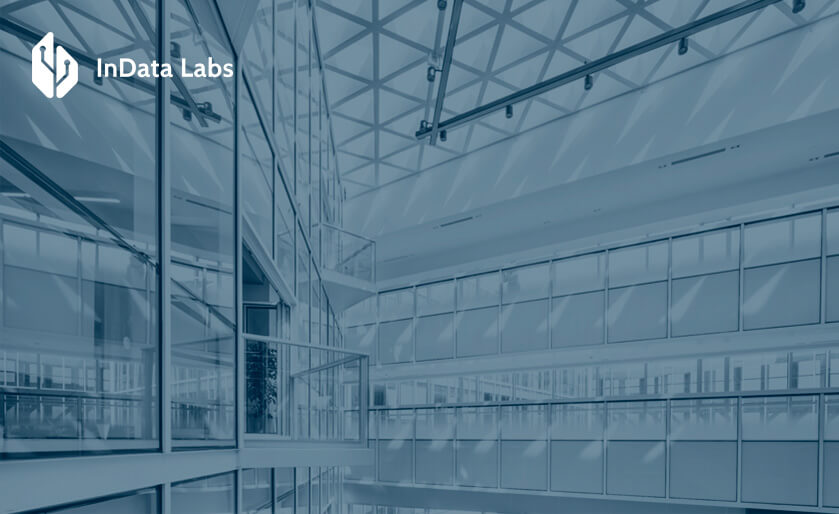Gaining valuable insight into customer preferences and concerns is paramount to the success of any business. The most efficient way of doing so is by implementing sophisticated yet straightforward data capture techniques. These involve types of data capture methods such as surveys, interviews, focus groups, market studies, and many more.
Knowing your customers’ needs and tracking market trends allow businesses to make strategic decisions that will enhance their sales and overall success. Even for established companies, an in-depth understanding of the changing market landscape can quickly boost out-of-the-box strategies and open opportunities for growth.
As the digital revolution continues to drive commerce forward, customer data capture methods remain essential for staying ahead of the competition and keeping customers satisfied.
What are data capture techniques in general?
At first glance, data capture may seem like a complicated and overwhelming process. Anyone with a cursory knowledge of the subject knows it! A good data capture technique inserts updates and deletes items in databases; but what triggers this process? It turns out that when programming databases like Microsoft SQL Server, one can make use of a feature known as trigger based inputs which allow the system to be programmed to perform certain behaviors whenever related data is altered.

Source: Unsplash
To be more specific, data capture is the process of automatically transferring digital and analog data into a computer or another type of digital storage. It involves the use of effective and innovative technologies such as optical character recognition, QR codes, bar code readers, automated form processing (and more) to quickly accumulate data from various data sources.
This technology is becoming increasingly popular within digital marketing as it makes it easier for businesses to collect customer information to better understand their audience and then source and target their products and services accordingly. Ultimately, data capture has enabled us to reduce human involvement in manual processes allowing organizations to benefit from cost savings, improved accuracy and streamlined workflow.
What is data capture in business?
Data capture in business is the process of collecting, formatting and storing raw data taken from a variety of source tables. This data can include customer information, market trends, other type of storage on Mac, surveys as well as other forms of analytics available. Businesses use this data to gain better insight into their consumer’s needs and preferences. By having an organized database filled with accurate and up-to-date information, companies can make better decisions on how to adjust their products and services.

An easy example of this could be a retail store capturing a customers’ contact information during their checkout process to maintain customer loyalty by sending out birthday emails or special sale announcements. In the medical industry alone, the process allows doctors to populate patient records quickly and accurately – this cuts down on time wasted inputting information while still maintaining precise records. Amazingly enough, it seems data capture also ends up saving time (and money) in more ways than one.
How do you capture data effectively as a business?
As a business owner, you do your best to accurately capture data as it relates to sales and other important metrics. But what is the most effective way of doing this? There’s no one-size-fits-all approach of course – the requirements vary from business to business.

Source: Unsplash
With the power of modern technology, however, there are countless ways for businesses to track their performance impact in an efficient and effective manner. Let’s take a deeper dive into how you can maximize data capturing so your business stays ahead of the game.
Understand the importance of data
If you want a data capturing definition, here it is. Data capture is the new currency and arguably one of the biggest drivers of success today. Whether you’re overseeing an E-commerce site or a nonprofit organization, tracking data is essential for optimizing business decisions and strategies.
The right information can help you identify trends, measure ROI, anticipate consumer preferences and make better decisions faster. Not only that, but data-driven decision-making gives your team clarity on what to do next, allowing you to use finite resources such as time and money more efficiently. That’s not just invaluable in the current economy; it’s also crucial for staying ahead of the competition and ensuring that your business makes the most out of every opportunity.

Source: Unsplash
Identify which source system is ripe for data collection – is there existing customer data, or analytics from website traffic you can use to inform decisions? As modern marketers, it is our duty to identify which source database is the most viable when considering data collection. Is there a trove of customer data at our disposal that we can use to further inform decisions? Perhaps the analytics generated within your website traffic can offer some insights and provide a more comprehensive view of your next strategies.
Create a process to collect this data
Conducting research can often be an arduous task, but it’s essential to ensure that the data we collect is reliable and up-to-date. Before getting started, we need to develop a process to minimize any potential errors that may occur. The first step is mapping out each task of our project, such as when and how we’ll acquire the information and who will be in charge of reviewing it.

Source: Unsplash
Then, setting expectations around accuracy is key — it doesn’t matter how quickly you finish if your results are inaccurate! Communicate clear guidelines so everyone on the team knows what resources are available and agrees on the same standards of quality. Finally, have multiple checkpoints throughout the process to make sure information is current and spot any discrepancies that could arise along the way. With this method for collecting data, accuracy should always come first!
Analyze and interpret the data
Analyzing and interpreting data can be one of the most valuable activities for any business. Through carefully considering the information at hand, entrepreneurs may uncover patterns and draw correlations which are essential to not just navigate the present moment, but also anticipate future needs.
With this type of understanding, a business can develop plans for growth that are informed by data and evolve in response to market trends. This is a crucial foundation upon which to build successful and sustainable models for businesses to expand their reach in meaningful ways.
Use A/B testing and ML algorithms to gain stronger insights from data
As companies grapple with expanding data sets, the question of how to turn this mass of information into meaningful insights has become increasingly important. Luckily, the use of technology like A/B testing and machine learning algorithms offers a way to make sense of the chaos that often accompanies larger datasets.
Thanks to their predictive capabilities, these algorithms can discriminate between noise and true signals in data, leading to valuable and actionable business intelligence for those willing to embrace them. So, if you haven’t already—it may be time to brush up on your tech skills and get ready to unlock your company’s full potential.

Source: Unsplash
Communicate and share findings with stakeholders
Understanding key data is paramount to any business, and for leaders to make the best decisions for their organizations and stakeholders, they need to ensure that everyone has access to accurate facts and figures. Taking a proactive approach to communication is necessary to guarantee that all interested parties keep up with market events by engaging them with an easy-to-understand insert update reflecting changes in the economic landscape.
Storing reports and other materials in an accessible place ensures shareholders have clear insights as soon as they become available, while maintaining ongoing dialogue gives leaders the opportunity to address misconceptions along with introducing new findings. If you would like the best chance of success, take the initiative yourself and communicate those key findings securely and effectively!
What is the change in data capture?
Change data capture CDC is a technique for capturing modifications made to a database. It records what has changed, the time it was changed and who initiated the change. This makes the process of tracking changes incredibly efficient, as it requires no extra coding from engineers or DBAs. With CDC, any changes made to the source database can be quickly and easily tracked in real-time, allowing organizations to manage real time data more effectively.

Source: Unsplash
Storing a record of these changes also helps to provide an auditable history of every change that’s been made over time, which is ideal for regulatory compliance purposes. In addition, log based CDC technology provides organizations with the capability to react quickly if there’s ever a need to roll back due to unexpected errors or malicious activities.
What are some change data capture tools?
There are numerous CDC tools available on the market today, offering data capture solutions for real-time data replication, high performance streaming and change synchronization. The most effective CDC tools will rely on a log files based approach, capturing changes in an asynchronous manner while relying on proven key technologies such as message queuing and publish/subscribe scenarios.
They are also highly scalable with the ability to scale up or down based on customer needs. Among some of the popular Change Data Capture tools currently available include Attunity Replicate, Linux Foundation’s Debezium, Oracle GoldenGate, Striim, Microsoft Azure Synapse Analytics and ArcESB.
What are data capture tools?
Data capture tools are software and hardware systems used to scour and store all types of data. In business, they can be used to analyze customer experiences, optimize marketing campaigns and improve business operations.
Here’s a list of five excellent data capture tools any business could use:
- Omnichannel analytics enable businesses to collect data from multiple channels including websites, emails and social media posts.
- Smart forms allow companies to collect information through digital surveys.
- Invoice recognition software to quickly convert important data into useful information. This means faster data processing times, more accurate payment records, fewer mistakes, and improved visibility into transaction history for businesses both small and large.
- Optical character recognition (OCR) technology is widely used for automatic extraction transformation of data from images or scanned, unstructured documents It’s great for document management and word processed content.
- Business intelligence platforms give businesses the capability to organize vast amounts of data in an effective way.
- Natural language processing (NLP) uses artificial intelligence technologies to process natural language texts such as reviews or feedback forms for further analysis.
What is a method of automated data capture?
Automatic data capture techniques are a great way to increase efficiency and reduce manual data entry. They eliminate human error, save time, and can be incredibly precise. Each one of the automated data capture methods have its perks: with optical character recognition OCR, barcodes and RFID tags can be scanned from a distance and data quickly extracted; intelligent character recognition ICR allows for paper documents to be digitized accurately; wirelessly transmitted data can be collected on-the-go; and naturally-spoken commands or questions can fill data lakes and database triggers through the power of voice recognition technology.
The possibilities are practically limitless when it comes to an automated data capture system; this is why so many businesses have made the switch from a manual data capture.

Source: Unsplash
How do you automate data?
Having your Big data applications are organized and automated can increase workflow efficiency, reduce costs, and improve accuracy. To get started, you’ll need to identify which data needs to be collected, what format it needs to be in, where you will store it, and how it will be accessed.
Once you have clarity on those questions, you’ll want to map out your business processes and tech stack. You can leverage any artificial intelligence or machine learning source application or create algorithms of your own to facilitate the automation process. After that comes implementation – setting up databases and systems according to the automation plan.

Source: Unsplash
Finally, you’ll need an ongoing maintenance system to keep track of your new automated data collection; data will come in and add so you’ll add it into the database. Through this step by step process you’ll have effectively created an automated data capture method and therefore, plan.
Challenges in the current data capture strategy
With the complexity of today’s digital world, there are a number of unique challenges that need to be taken into consideration when capturing data. For example, manually recording information can be tedious and time consuming without the right tools in place.

Inaccurate or not specific data can cause problems down the line when analyzing results and drawing conclusions, so in order also make sure that steps are taken during process implementation to confirm accuracy. The prevalence of popups and banners on websites demanding user data can also turn customers away from participating if permissions are not handled correctly. Taking all these factors into account is important for building a successful and reliable data-capture process for any business.
Benefits of direct data capture for businesses
Data capture technology is becoming an invaluable asset for businesses, as it allows them to collect information, store and analyze it quickly and accurately. With accurate data, businesses can craft strategies that allow them to better compete in their respective markets. Not only does data capture technology help businesses stay ahead but it also saves countless hours of time by quickly completing tedious tasks such as tracking orders or interpreting customer feedback.
For example, voice recognition software, another method of data capturing, can automate customer service regarding frequently asked questions or cataloging information so it’s easily retrievable. Ultimately, this helps provide customers with a faster and more accurate response from the business which promotes better returns overall.

Source: Unsplash
Data integration techniques for business have come a long way in the last few decades! We’ve seen the transition from manual record keeping to digital, and even more recently magnetic stripe cards and other forms of smart cards technology. These tools provide businesses with a centralized repository of data that can be used to access information quickly and securely. It’s an exciting time to see how data integration techniques can help businesses stay connected, efficient, and adaptable.
Conclusion
Data has become a crucial part of business operations in recent years, and those who are ill-prepared to capitalize on it are at a major disadvantage. Taking the steps to think strategically about how you collect and analyze data, from understanding why it is valuable to using technology like A/B testing and machine learning algorithms, will really pay off. Using the insights you gain from this process of harvesting, interpreting and applying data can give your organization an edge over competitors.
And don’t forget to keep higher-ups in the loop – when everyone has access to reliable facts and figures they can more easily collaborate at a higher level! So regardless of size or industry, it’s time to get data-driven: the results are sure to surprise.
Data capture and OCR to level up your business
Need a technology provider to capture and extract data automatically from unstructured documents and automate work processes with ease? Contact us, and we’ll discuss how we can help.



